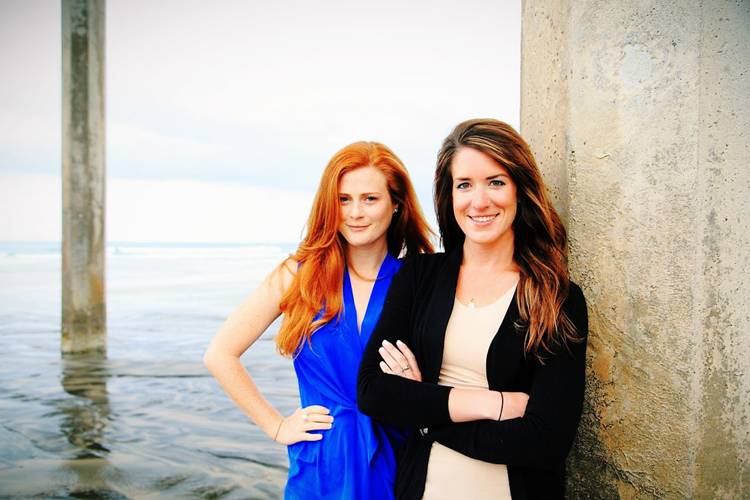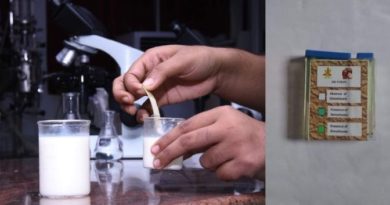Big and getting bigger .Two to watch out for

By: Aishwariya Chauhan
Published on: Apr 9, 2018
Each year Forbes publishes its coveted list of the most successful people in various fields. At Iamrenew we’ll be reviewing the 30 under 30 list to bring you people you should keep an eye out for in the energy sector and whose contributions would help fuel a more sustainable future around the world.
Emily Callahan(28) & Amber Jackson(28)
Co-Founders: Blue Latitudes

Blue Latitudes is a California Limited Liability Company (LLC) based in San Diego working towards transforming offshore oil platforms into artificial reefs that encourage the growth of thriving ecosystems. Started in 2016, Blue Latitudes works in dual capacity with Dr. Sylvia Earle’s Non Profit Organisation Mission Blue, which helps Blue Latitude fund their research via their fiscal sponsorship. The company itself works as a small consulting firm, which conducts ecological value assessments of offshore structures and environmental reviews around the world. The research conducted by the company aims at finding long term solutions for these unique ecosystems thriving below the controversial oil and gas platforms.
Emily Callahan is a marine conservation biologist, oil and gas consultant and explorer. She has a BA in Environmental Science and an M.A.S in Marine Biodiversity and Conservation from Scripps Institution of Oceanography. Emily previously worked as a field technician on the BP oil spill in the Gulf of Mexico where she collected water, sediments and oiled bio-data samples for research on the effects of the oil spill on the environment. It was there that she learnt about the “reefs to rigs” program, which resonated with her passion and work. Her key industry of expertise lies in offshore oil and gas development and decommissioning.
Amber Jackson is an oceanographer, environmental scientist and entrepreneur. She has a B.A in Marine Science from UC Berkeley and an M.A.S in Marine Biodiversity from Scripps Institution of Oceanography, where she met Emily. Amber worked as an ocean curator for Google. Where she engineered and launched intelligent layers in Google Maps that distill and relate complex concepts of ocean science to the general population; she also contributed in the construction of the virtual sea floor found in Google Earth. Her key industry of expertise lies in project management, ecological assessments, marine biological monitoring and habitat restoration.
The Rigs to Reefs Program (R2R) acts as an alternative to the complete rig removal. The oil company can modify its platform so as to support marine life as an artificial reef. The oil is capped is well capped and the upper 85 feet of the platform is towed away or removed. Scientific studies at UC Santa Barbra conclude that the underwater platform structures evolve into ecologically and economically valuable ecosystems. One such example is of the juvenile rockfish, a species known to be over-fished in the state of California is actually found live in higher densities at several of the platforms. Researchers suggest three reasons for the above: first, the platforms occupy more water-column than most natural outcrops; second, there are fewer larger fish in the mod-water habitat; third, the platforms height provides great delivery rates of planktonic food for the young fishes.
In addition to the environmental factor the Rigs to Reefs Program is also more economical than completely decommissioning a rig. The total estimated cost of the complete removal of a rig is approximately $5 million whereas the construction of one artificial structure is estimated to be $800,000 saving the almost $4 million.
Blue Latitudes have researched the R2R program extensively and advice companies and governments globally to look at these structures from an ecological and environmental perspective by providing them the necessary information, market analysis and biological assessments so as to help them make more informed decisions.
Founder: Pluto AI

Pluto AI is a Silicon Valley start-up set up in March 2016 and has raised $2.1 million in funding in order to build an intelligent platform for water facilities. Prateek Joshi is an Artificial Intelligence researcher who did his undergrad in Electronics and Communications Engineering from the National Institute of Technology, Karnataka. He then went on to do his MS in electrical engineering and graduated with a staggering 4.0 GPA. He has published 8 books on Artificial Intelligence and is featured on CNBC, TechCrunch and Silicon Valley Business Journal. He is also a three-time TEDx speaker. Haling from a small town in India Prateek wanted to start something which had a meaningful impact on society and environment.
So, what is Pluto AI all about?
Pluto is an intelligence platform for water, wastewater and industrial treatment plants in order to help them reduce their energy consumption, predict performance and minimise operating costs. Pluto uses cutting edge Artificial Intelligence Algorithms to analyse data from various sources such as SCADA, meters and event logs so as to assist companies in tackling the issues stated above in real time. Pluto AI promises not interfere with the company’s backend it simply connects to all the data sources and creates comprehensive deep learning models based on the collected data. Their propriety algorithms combine data from various streams to understand the cause of an event. The ability of the platform to predict events in real time enable the company’s to take actions in real time as well.
![]()




